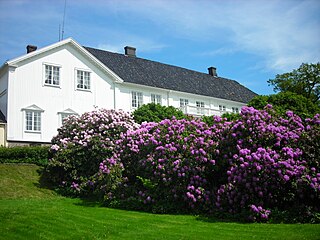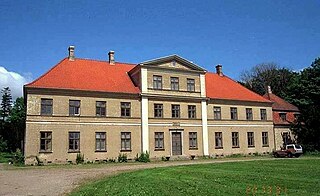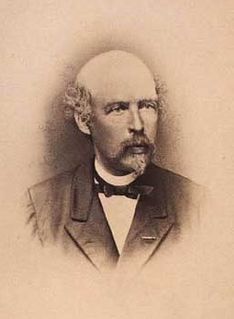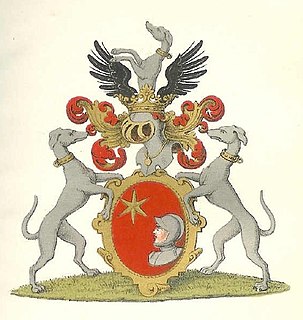
Jarlsberg was a former countship that forms a part of today's Vestfold county in Norway.

Benkestok is one of the original noble families of Norway and one of the few to survive the Middle Ages. At the height of its power, the family ruled large estates in Båhuslen, in Western Norway, in Northern Norway, in the Faroe Islands, and in Shetland.
Aristocracy of Norway refers to modern and medieval aristocracy in Norway. Additionally, there have been economical, political, and military elites that—relating to the main lines of Norway's history—are generally accepted as nominal predecessors of the aforementioned. Since the 16th century, modern aristocracy is known as nobility.

Norwegian heraldry has roots in early medieval times, soon after the use of coats of arms first appeared in continental Europe. Some of the medieval coats of arms are rather simple of design, while others have more naturalistic charges. The king-granted coats of arms of later times were usually detailed and complex. Especially in the late 17th century and the 18th century, many ennobled persons and families received coats of arms with shields containing both two and four fields, and some even with an inescutcheon above these.

The Count of Wedel-Jarlsberg is a title of the Norwegian nobility and of the Danish nobility. The family of Wedel-Jarlsberg is a branch of the larger family von Wedel, which comes from Pomerania, Germany. Family members have had a significant position in the 18th and 19th centuries' Norwegian history.

Peter Martin Anker was a Norwegian landholder and politician.

Huitfeldt is a Norwegian noble family.
Gyldenkrantz was a Danish and Norwegian noble family of Dutch descent. The family became patrilineally extinct after some generations.

Falsen, also de Falsen, is a Danish and Norwegian noble family.

Güldencrone, also spelled Guldencrone and Gyldenkrone, is a Danish and Norwegian noble family with the rank of fief baron.

Fabritius de Tengnagel is a Danish and Norwegian noble family.

Hielmstierne was a Dano-Norwegian noble family.

Werenskiold, also spelled Werenschiold, Wærenskiold, Werenskjold etcetera, is a Danish and Norwegian noble family living in Norway.

Rosenvinge is a Danish and Norwegian noble family.

Mecklenburg, Mechlenborg, and Mikkelborg is a patrician and historically a prominent family living in Denmark and Norway. They descend from Flensburg in today's Germany. Members include Willum Mecklenburg, Feudal Lord of Eiker, as well as several regional bailiffs, militaries, and privileged merchants. The family is closely related to families of the Danish and the Norwegian nobility, and among cognatic descendants of the family are the Counts of Wedel-Jarlsberg.

Bjelke, also spelled Bielke, was a Danish and Norwegian noble family, known since the mid-15th century and extinct in 1868.

Aubert or d'Aubert is a family of the French nobility, and a branch belongs also to the Nobility of Denmark and to the Nobility of Norway. The family originates in the town of Thionville in Lothringen, where their progenitor Jean Aubert was a merchant. Today members live in France, in Denmark, in Norway, in Sweden, and in Germany.

Kaas is the name of two related Danish noble families from Jutland, which were and are, respectively, two of the preeminent families of the Danish Uradel or ancient high nobility, which were represented in the Council of the Realm. They are known as the elder Kaas family and the younger Kaas family or named for their respective coats of arms. Both families appeared in the middle ages, and they have been noble since time immemorial. Like all old noble families in Scandinavia, the families are untitled, although individual members in the past held the rank of knight, traditionally the highest rank of Scandinavian nobility and reserved for important statesmen, but always of a non-hereditary nature.

Stockfleth is a Dano-Norwegian noble family. Three branches of the family were naturalised as a part of the Danish nobility in 1779, based on a claim that the family had been noble since the time of King Valdemar III (1314–1364).
Countship of Brahesminde was a Danish countship created May 9, 1798, for privy councilor and chamberlain Preben Bille-Brahe of Hvedholm, Damsbo, Stensgård and Østrupgård. The county was dissolved by abolition of the lens system (Lensafløsningen) in 1928.


























